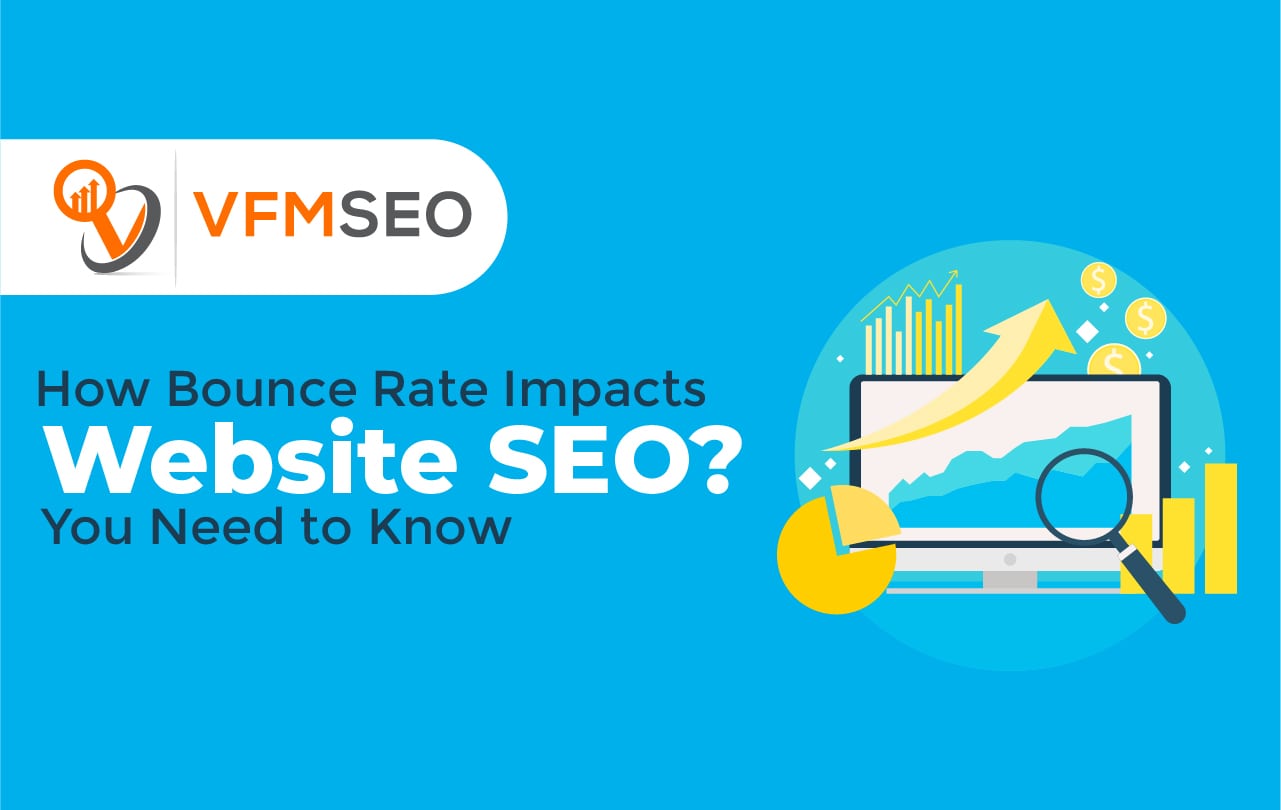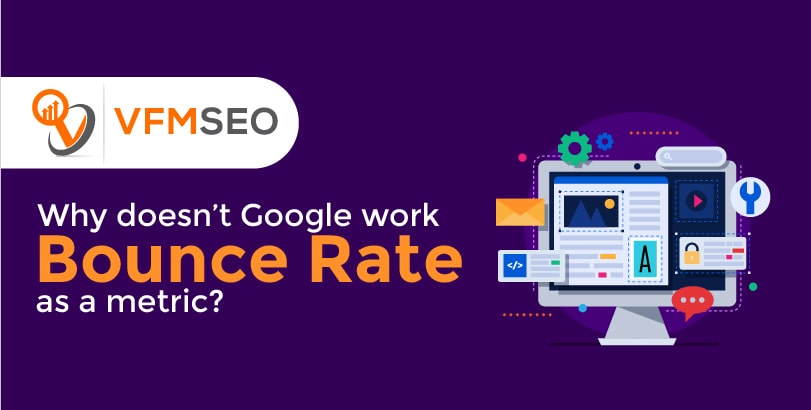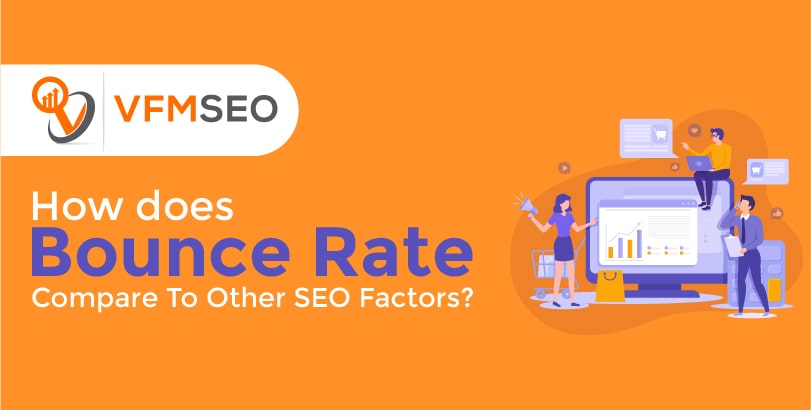
How Bounce Rate Impacts Website SEO? You Need to Know
SEO experts have debated the significance of Google Analytics bounce rate to search engine ranking for years. Yet, several misconceptions still surround the topic. The result is several website owners optimizing for lower bounce rates in hopes of improving their ranking, while lower bounce rates don’t simply translate into higher rankings.

What does Bounce Rate Measure?
Bounce rate is the rate of single-engagement visits to your site. That means what Google Analytics is tracking is the number of visitants who come to your page and leave without viewing any other page on your website or engaging with your page in any meaningful form (more on that in a previous chapter).
Marketers interpret this measurement to decide whether the webpage provided what the user was looking for.
Bounce rate is not a measure of how long a user spends on your page. Much of the confusion arises from this distinction. You can have a magnificent, engaging page AND a high bounce rate because bounce rate does not cover time spent on site.
This has two implications:
First, the bounce rate is not necessarily bad.
While bounce rate might be explained by ineffective content and low accessibility, it can also result from a mismatch between keywords and content or even the purpose of the page.
For example, a high bounce rate on a landing page or product launch page is inevitable (especially with the trend in one-page websites). You might also want a high bounce rate for informational pages where users can find what they’re looking for and then move on.
Therefore, optimizing for bounce rate does not necessarily imply you are improving the quality of your website or helping your website become more beneficial for your visitors. Second, overemphasis on bounce rate could reduce the usability of your site.
Imagine turning every page you have into two pages and linking them together to decrease your site’s bounce rate forcibly. From the analytics end of things, you have raised a KPI. From the user experience end of things, you’ve turned a simple, right site into a mess. The roadmap of your website and your user funnel should be useful in design rather than bounce rate focused.

Why doesn’t Google work bounce rate as a metric?
Based on what bounce rate measures, it is simple to see why Google doesn’t use the bounce rate you see on Google Analytics as a ranking circumstance on SERP. We can break it down into four principal reasons.
Bounce rate is not a good measurement of quality
As explained before, bounce rate cannot accurately determine user engagement because it does not factor in page time. At the same time, bounce rate differs widely across industries. For instance, according to a source, blogs tend to have bounce rates of 70-90%, content sites about 40-60%, and service sites only 10-30%.
It does not make sense for Google to punish several types of websites based on their Google Analytics’ bounce rate if the page’s purpose is not to lead the user through the rest of the website.
Google lacks the motivation to access Analytics data
While we see Google Analytics data as integral to any testing or analysis, Google isn’t likely to see things the same way.
People who believe Google has cause to stalk Google Analytics data cite one of two reasons, each of which can be deconstructed (though do note, a certain degree of conjecture has been employed on both sides since Google’s actual algorithm is established).
Google Analytics can be easily manipulated
The number of posts published on how to identify and filter out bot behavior in Google Analytics should be a powerful indicator on its own of Google Analytics’ inherently unpredictable nature. If Google Analytics isn’t powerful enough to automatically filter out manipulative behavior, Google has no reason to employ this “flawed” data in its ranking system.

How does bounce rate compare to other SEO factors?
This question is most that SEO articles won’t talk about, but it’s apparently the most important one.
What’s great isn’t whether Google is tracking bounce rate through Google Analytics and changing your webpage ranking based on it. After all, direct implications are easy to follow. Instead, what matters is how bounce rate indirectly influences the SEO factors Google does care about.
To start, let’s return to the pogo-sticking discussion. By this point, it should be clear pogo-sticking is something we cannot immediately track through analytics tools. Google’s black-box algorithm isn’t exactly easy to analyze. However, we can work around this information hole by combining two factors we do know: bounce rate and dwell time.
While you cannot analyze search intent with these two variables, you can make a pretty good estimate of how much of your organic traffic classifies as long clicks.
, if your webpage has a high bounce rate, but users on your page also have a high dwell time, your webpage possibly has an outstanding long click percentage even though your bounce rate would typically be regarded as damaging. Thus, by taking dwell time into account, you can bypass unnecessarily optimizing for bounce rate.
Second, a high bounce rate is often a sign of weakness in other SEO factors. Here are just a few SEO queries you might want to check for when your bounce rate is abnormally high:
- Slow loading speed
- Low-quality webpage design
- A mismatch between content and keywords
- Poor mobile optimization
These difficulties are treatable and often addressed when SEO experts “fix” bounce rates.
The difficulty happens when the focus is on bounce rate (the symptom) rather than the underlying issue. Therefore, it makes sense why fixing your webpage bounce rate often supports your SERP ranking but can sometimes affect nothing.
Final Words
The key takeaway is this: while bounce rate doesn’t directly affect your page ranking, its bounce rate is still something you should understand and be able to improve upon.
High bounce rates (when calculated correctly) are often signs of deeper problems like user experience issues or poor targeting. These are the things you should worry about. If you work on more profound issues like usability and customer targeting, SEO problems tend to improve.

